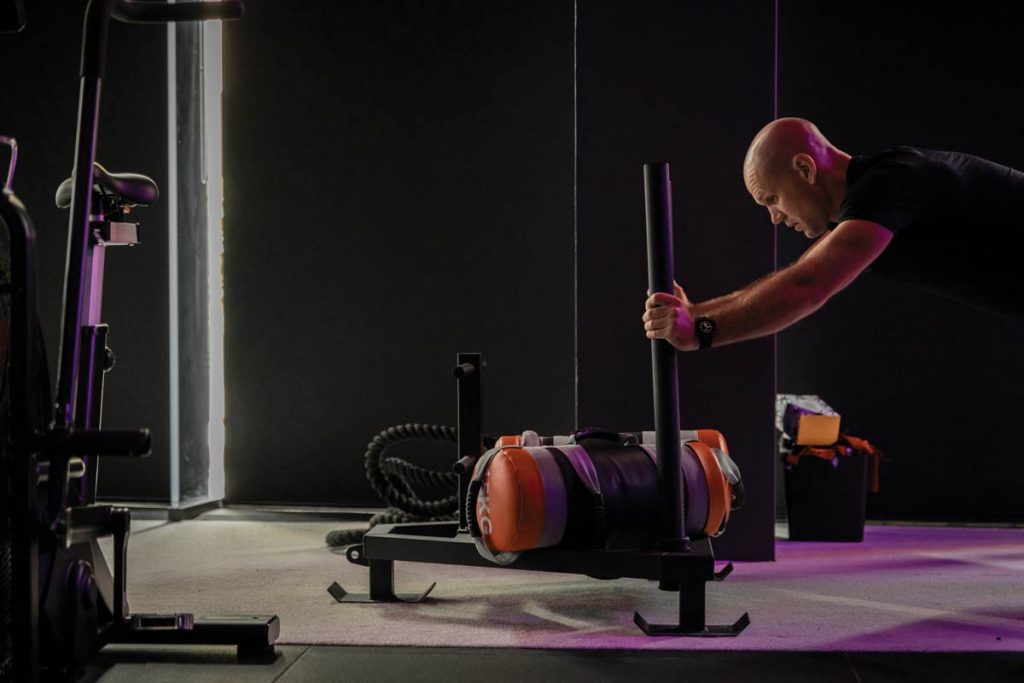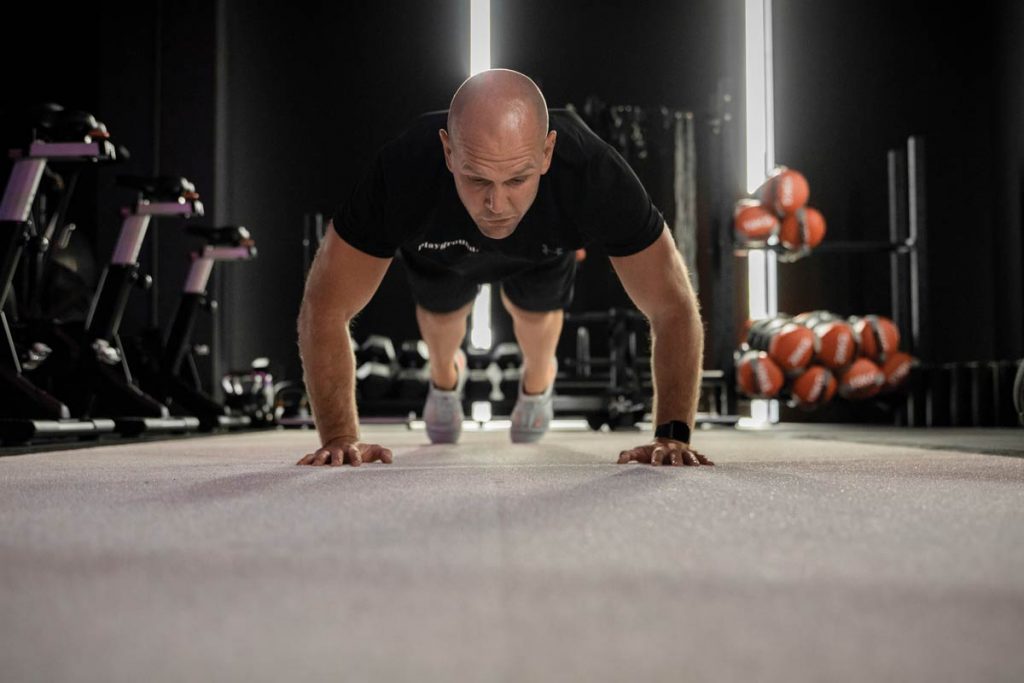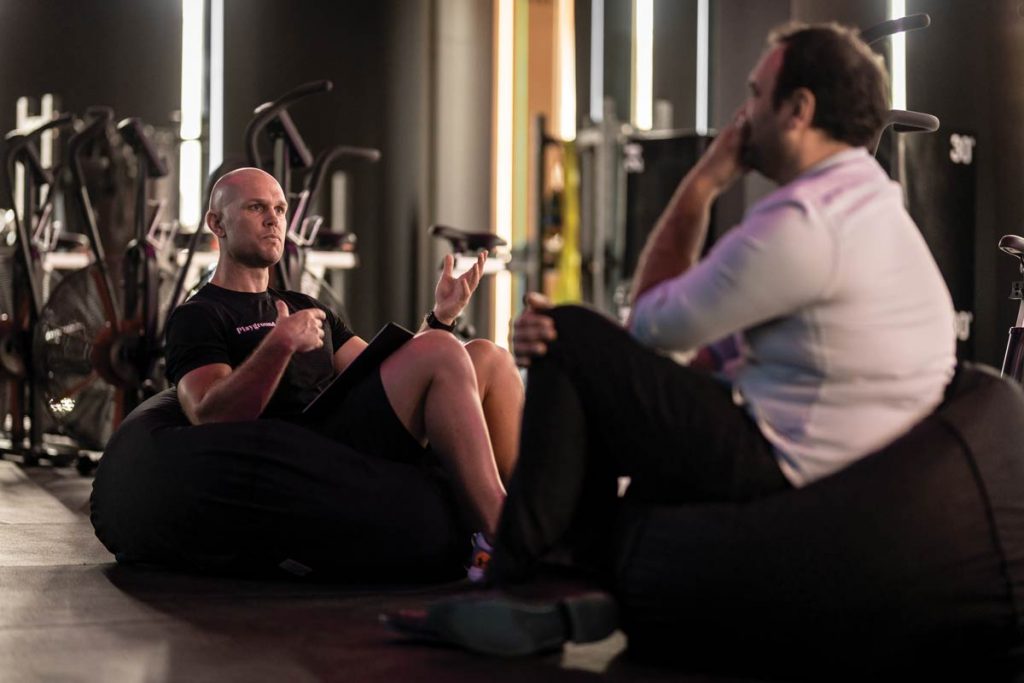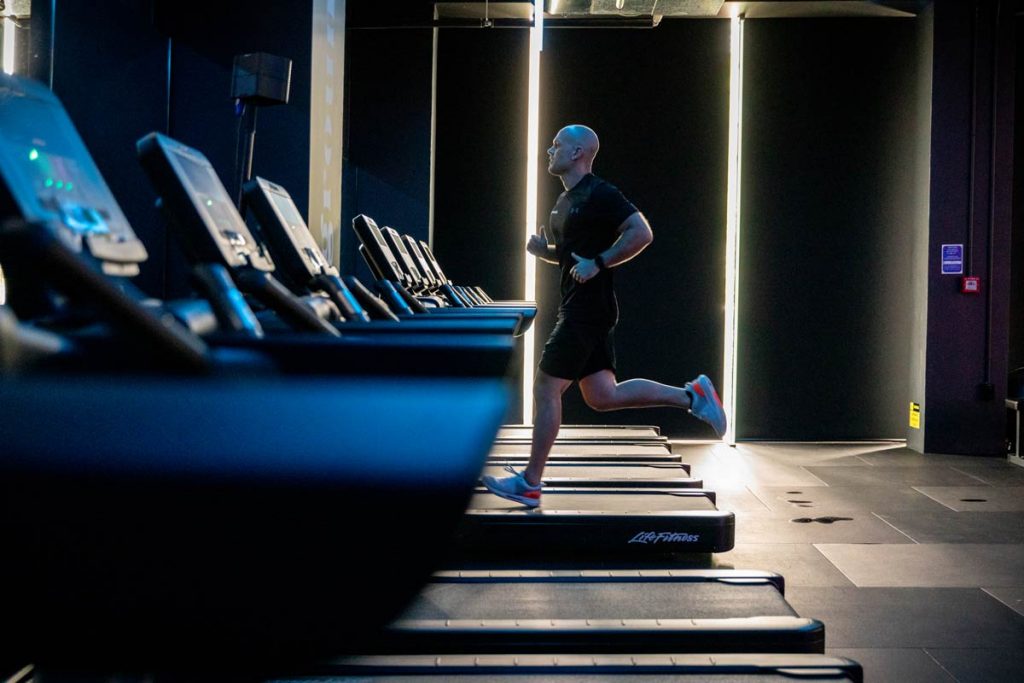Play to Win
If there are rulebooks for how you create gyms and nightclubs, the founder of Playground Fitness, Rhys Jolly, has obviously got them confused. Neon purple slogan lights, prints of famous rappers, black walls and blackened windows might be perfectly at home in a nightclub in central London, but Rhys Jolly has put them in Auckland’s newest gym on Newton Road, Playground Fitness. No, this wasn’t confusion or a bad batch of protein powder but a clever decision to change our approach to fitness. There is no rule that going to the gym can’t be fun, social and more like a Friday night out on the town – without the dodgy shots and the hangover, of course. We talk to Rhys about disrupting fitness and goals for 2020.
As I’m sitting here talking to you, it feels a little bit like a nightclub, rather than a gym.
Definitely nightclub-inspired. With the lights and the having fun in the group classes, because when you go to a nightclub, you’re there with your friends, you’re having fun, you’ve got a little bit of darkness, you’ve got that self confidence and then throw the bar in there. Because again, if you’re at a nightclub or a bar, you have a drink. But that’s gone from alcohol to something that’s more nourishing and refuelling, as opposed to something that’s more of a depressant.
Where did the idea come from?
We’d been thinking about it for a while. For the last two or three years, I’ve seen a few concepts in America, London, and Russia. And then I spun in a little bit of my personality, what I’m interested in training, what’s been so effective in training and then spun it into the studio.
Can you talk a little bit about some of your beliefs and what’s worked in your experience?
Firstly, you’ve got to enjoy it. If you’re not going to enjoy anything, then you won’t commit to it. For example, the bean bag situation, you’re more relaxed. I’ve got the bean bags here so everyone just chills out and it becomes a little community.
And then when it comes to working out, it’s heart rate driven, so it’s more specific to your body as opposed to one way for everyone. Each different zone of the workout is directed for your heart rate. It might be like, ‘Right team, in the next minute we’re going up into the orange zone.’ That could be 70% of your max heart rate and you’ll see up on the board your colour and you’ll see if you’re pushing hard enough. You can gauge where you’re at.
Or if you’re looking at your resting, you can see if you’ve become fitter as well. So it’s definitely specific to you and your body, as opposed to one rule that applies to everyone.

Can you talk about how wearables have changed the game?
It’s just adding that accountability and bringing some clarity to your training. It use to be, ‘How do you feel out of 10?’ And if you’ve had a rough day or you mentally you could be going through something, so that feeling could range from day to day. If you’re solely relying on your calories or your heart rate, it’s more accountability and more guidance.
Has it changed things fundamentally as well? Looking back at the old body builder magazines that had very regimented workouts.
The old school foundation is still there, but it’s changed so much. It’s no longer, ‘You need to do a bicep curl, because that’s the only way.’ If you don’t enjoy it, don’t do it. You can get that same muscle group in so many different ways.
It’s adding something functional to that, because you’re working more muscles at one time, rather than just isolating something. You’re burning more energy, you’re more effective in terms of training.

How has the science changed?
You track your body more and so you’ve got a better understanding of how your body’s working, so you can apply either a rest day or you can change your cardiovascular system or training so that you’re able to recover quicker or push a lot harder in your workout. The foundation is still there. It’s just now adding everything else to it or having the ability to track yourself a hell of a lot better.
What about the mental side of pushing yourself through a workout?
There’s always an element of going through a bit of pain or you might feel the burn or discomfort. But it’s also important to focus on the positive response you get from that workout. If you’re focusing on that positive response, you’re more likely to see it as something you want to do, as opposed to a chore.
Even with what you eat, focus on that positive response you get from your food. If you’re not getting that positive response, don’t do it. You’ve got to feel good and that’s why we train and that’s why we eat the way that we do; to make your body feel better.

What tips do you have for changing habits?
Number one is don’t go from zero to a hundred right from the get go. Progress into everything. Usually if you’re drastically changing your behaviour or trying to get that habit, you’ll feel too much of that change and you’re not going to feel that positive response.
It’s about baby steps; work your way towards something. Then it will become more of a lifestyle change because you’re changing little bits and pieces, as opposed to going from zero to a hundred or hot and cold.
Number two would be to plan it out so you can get routine and consistency. Without routine or consistency, then you’re not going to get anything. With training or eating, everyone knows that you need to do it over time, as opposed to once or twice a week. It’s not going to fit into your lifestyle and you’re not going to get that routine.
Number three is keep your goals front of mind. It could be a picture on the fridge or have it on your screensaver. If your goal is you’re going away for a holiday and you want to feel good, then put those little notifications around you. Make sure your goals are front of mind so that you’re always driving to those goals and there’s no slip ups.

Four is accountability. It could be booking into a class or it could be going to see a personal trainer or it could be grabbing a friend or a family member and doing the workouts with them. It could be setting those measurable goals, that could be through your wearable technology.
Lastly, have fun doing it. You’ve got to have fun. The more enjoyment you get out of it, then the more that you would want to keep doing it, as opposed to feeling that negative emotion going through that workout. You can exercise in so many different ways now. You don’t have to just go to the gym and bench press. Go in and enjoy what you do.
What was your catalyst to get into this?
I’ve been personal training for 11 years and I wanted to add a different element to the fitness industry here in New Zealand. I want to add value to someone’s membership so they focus on experience. I was at a time in my career where I wanted to take that next step.
With running a business, have you still got time to work out yourself?
I want to feel good through my day, so I make sure that I’m training at some stage through that day. Now, I’m addicted to the classes. I went for a run the other day and I used to love running, but now I don’t enjoy it because the atmosphere in here is so much better. We’ve got the music cranking, the trainers have good energy and you’re with friends; it’s the best. I just make sure that I find time.
Have you noticed, with an environment like this, that it changes the way people workout?
Definitely. They feel more secure. The feedback is that they feel like they are part of a community. We had two new people come in last week and everyone’s hanging out on the beanbags. But the first comment was like, ‘Holy hell, everyone’s just chatting. How has everyone got so much energy on a Wednesday night?’
Usually you go into a gym and everyone’s quiet and stand off-ish. But you come into these doors here and I’ll put such a big emphasis on you feeling welcome. It’s like you’re hosting your friends each time they come in and you make sure that no one’s standing by themselves. It’s a very cool environment where everyone’s included.

Is there a certain type of person?
Someone that’s aware of their body or are aware that they need to spend money to get more out of their health and fitness. But in terms of one demographic? No, we’ve got everyone from uni students to 40 to 50 year olds.
Auckland’s not short of gyms.
No, but I feel that we’re completely different. I want to disrupt that more by adding value to your membership and feeling like you belong to something. Adding value to things specifically about you and your training, to having fun and the other experiences that you get from coming into a boutique studio.
Every little detail has been thought out from the welcome, to ordering a smoothie, or a high five as that person comes through, to a followup text; everything is planned out.
How does someone go about joining?
Come in for a coffee or a smoothie so they can check it out. Or download our app, set up your profile and grab the free pass, which has three sessions. That allows you to go to the different days, because each day day of the week is different. And then come in and have fun.
Can you talk about how your relationship with Under Armour works?
I feel that the training that you do in here is athletic, we’re little community of athletes. You’re out here running on the treadmill, or walking up a steep hill, or you’re moving in a functional way where you’ve got to have the gear that allows you to do that, as opposed to coming in here with jean shorts. I feel we both our brands align on that.
So with Under Armour, we do little surprise and delights for people. We have co-branded stuff that we might chuck out. This week we’ve got Dream Week, which is seven workouts in seven days. At the end of that they’ll get a little co-branded surprise and delight for it if they complete the seven workouts in seven days. On that Sunday, we come together as a community in the gym and we celebrate the week and they get a top and socks.
Around Dream Week, we have a focus. This week is running technique, so running coaches will be coming in here and teaching them tricks and tips for the treadmill. Next month is nutrition. So a nutritionist will come in and talk to them about that. And the following month will be breathing techniques. They’re getting tools to go into their toolkit.
It seems like you’re doing things a little differently here. From the neon lights and the music, to the app and the experts and the community aspect.
I just want to change the game and bring value to people for what they’re paying for. I just want people to get more out of their health and fitness and to make that easier for people.
I’d rather spend an hour each day doing more work where I can affect more people, where they can get more out of their health and fitness because it’ll work for them and it’ll work for me. It’s about going the extra mile to create that experience for that person. I think we’re pretty world class on what we’re doing.
What’s the best piece of advice you’ve been given?
Be where your feet are. Be in the moment and focus on what you’re doing in front of you. Focus on what’s in front of you.

